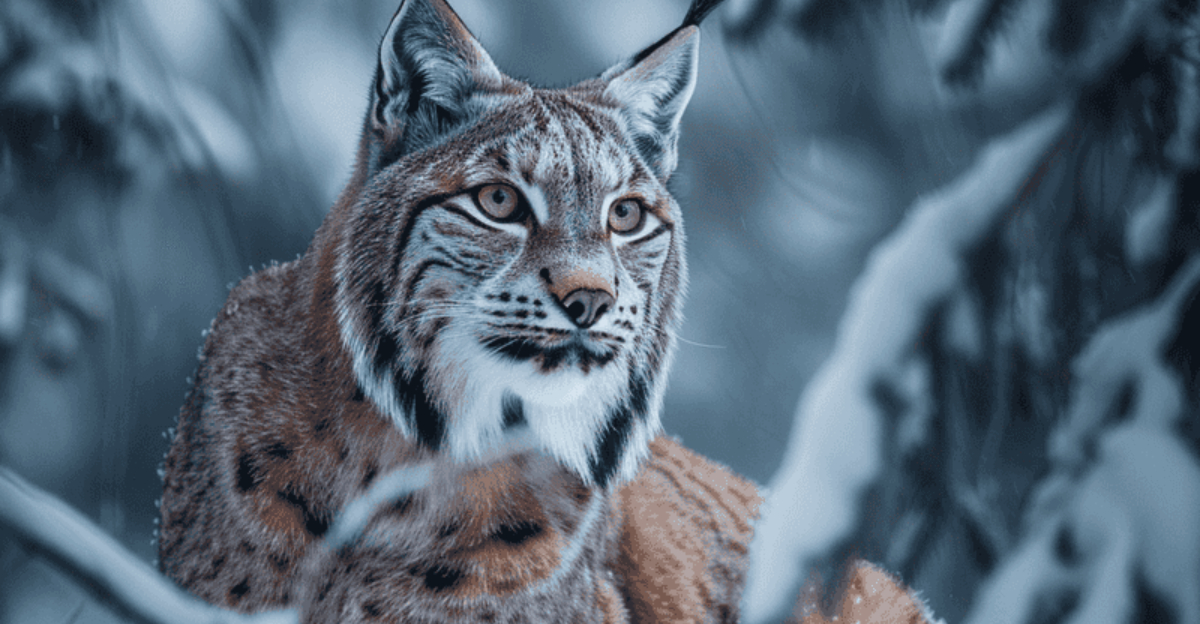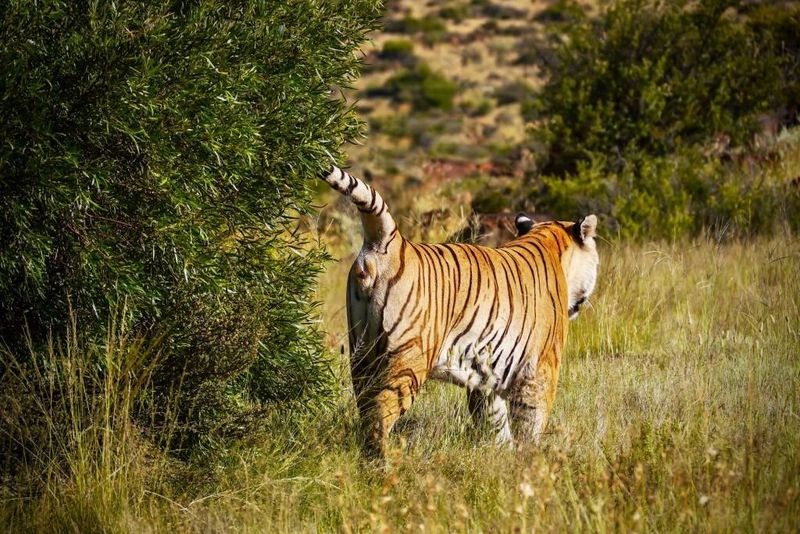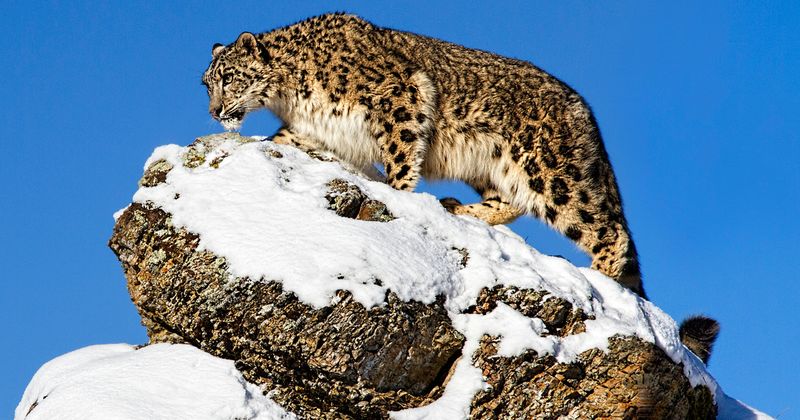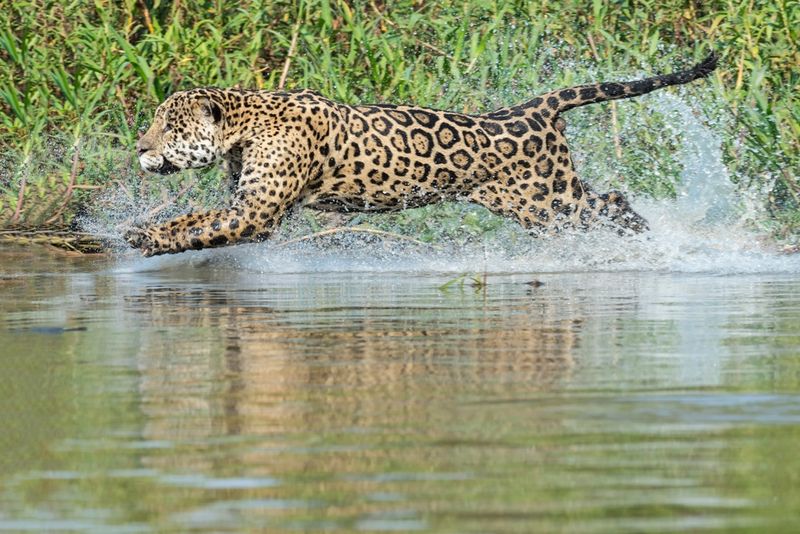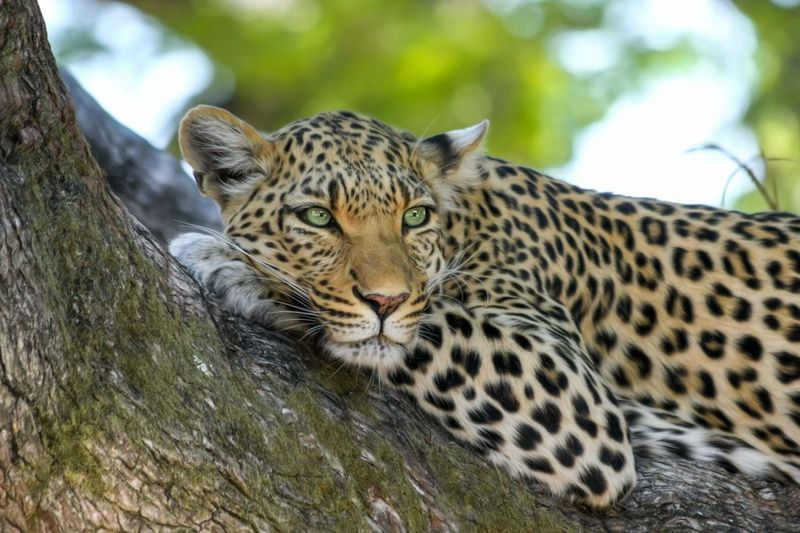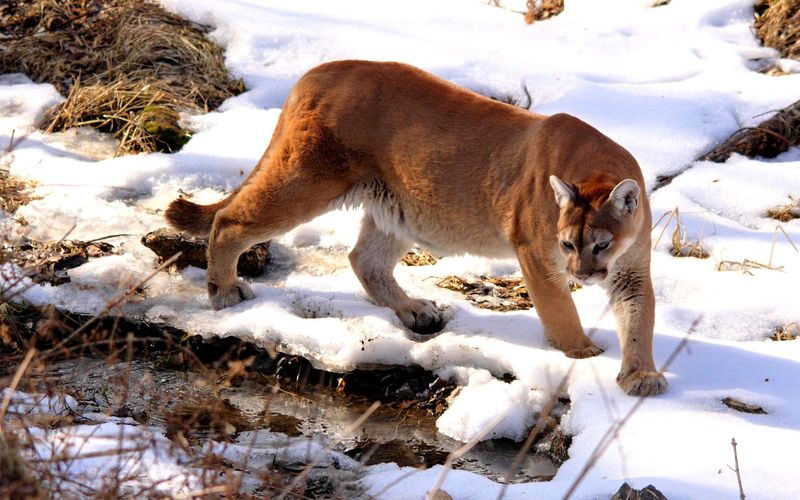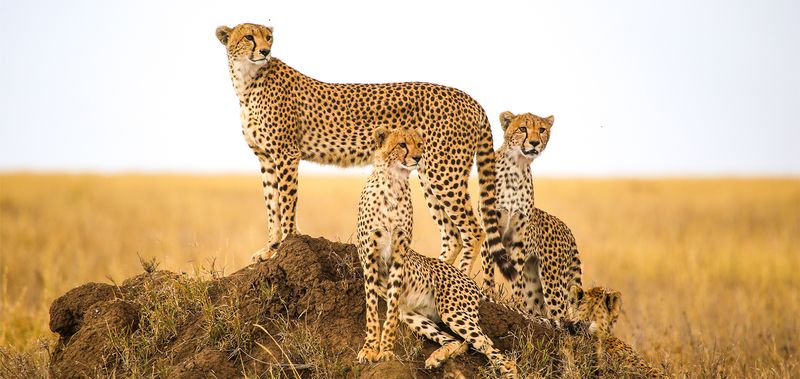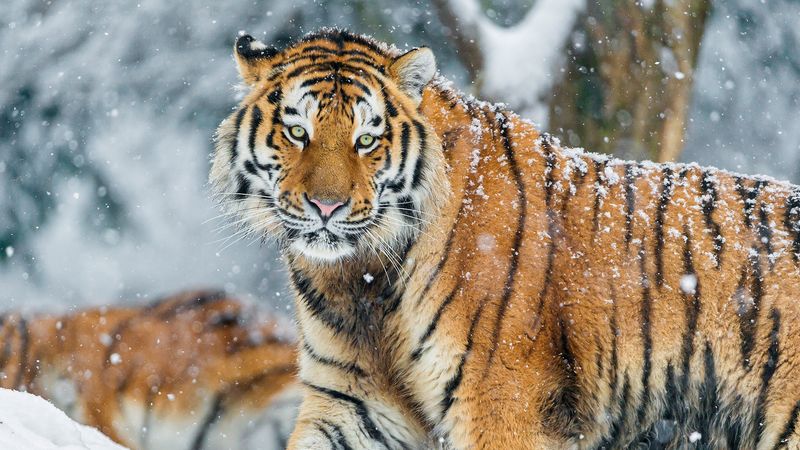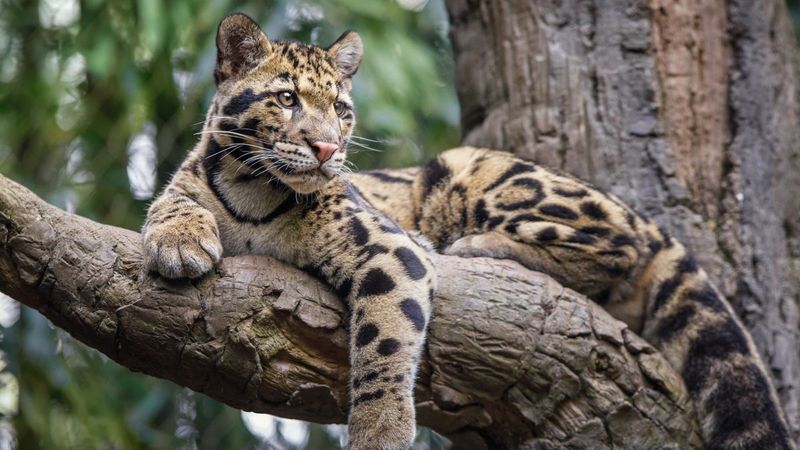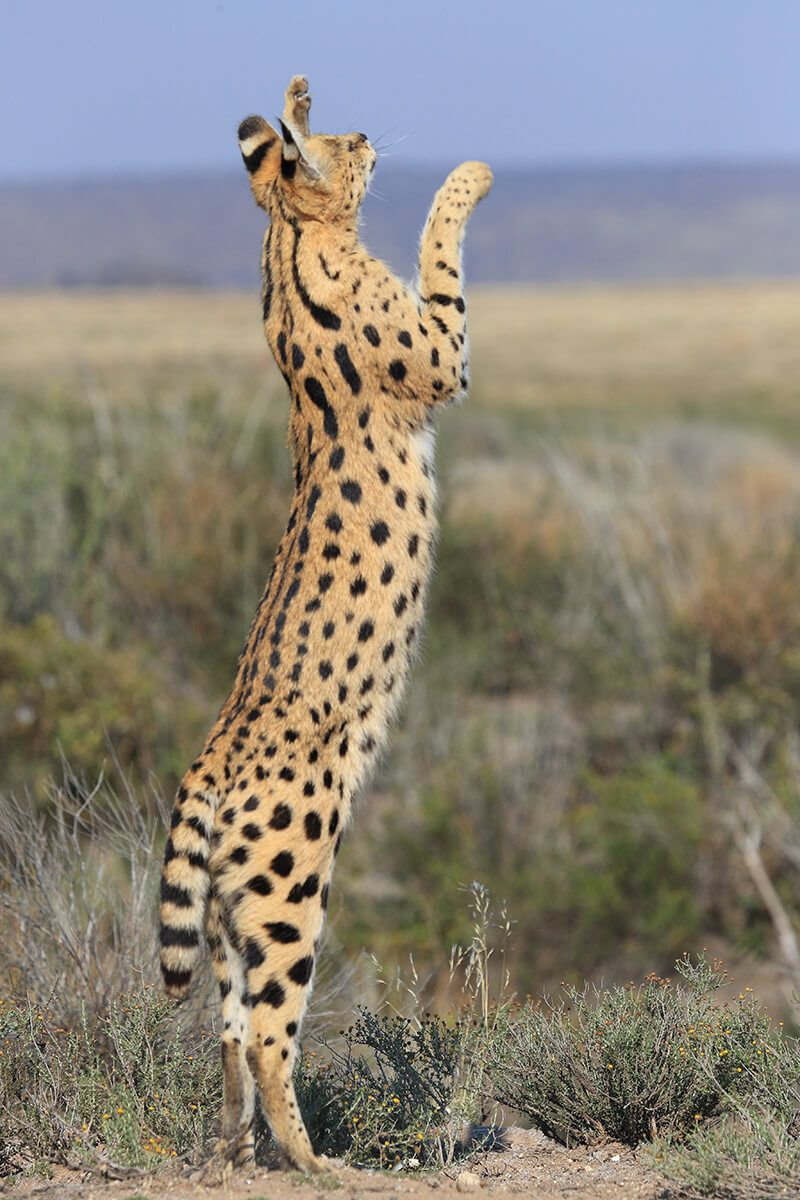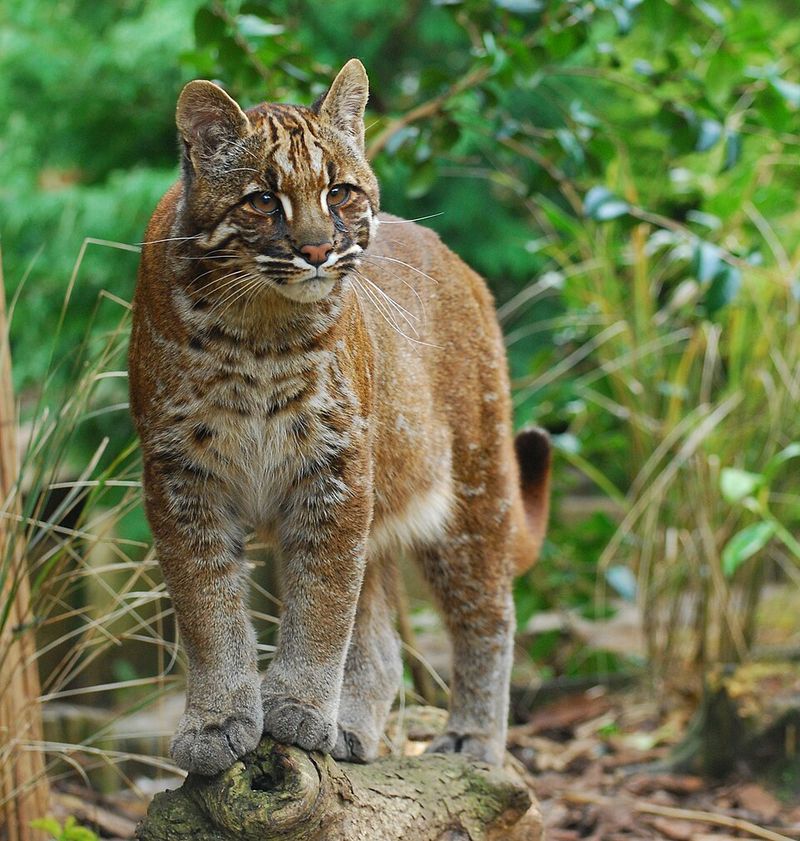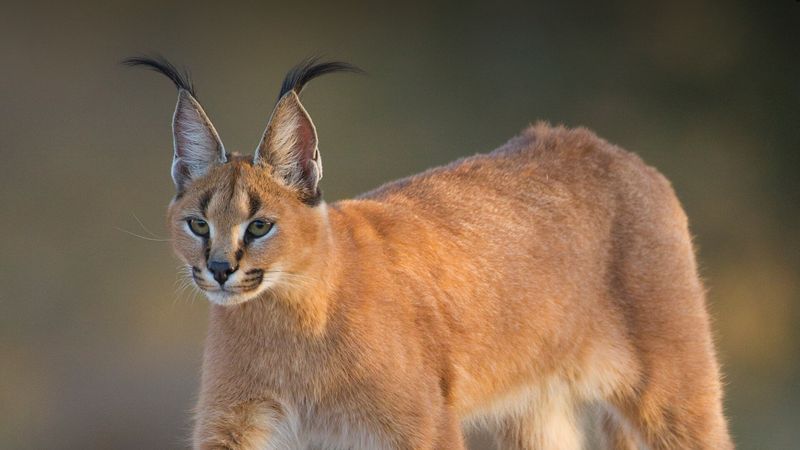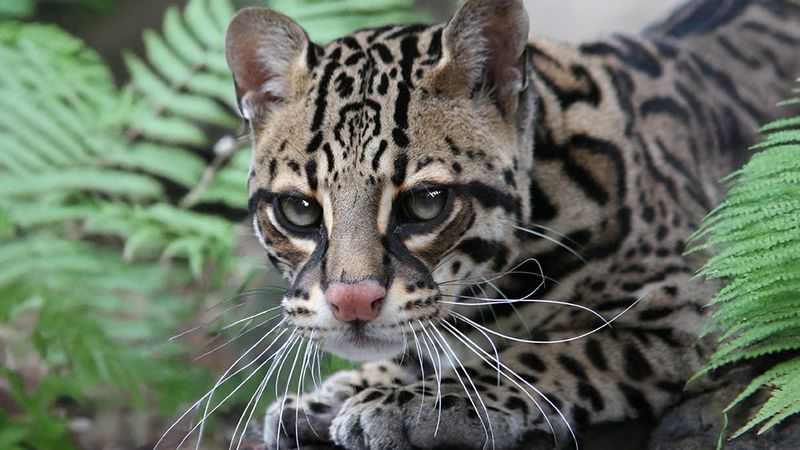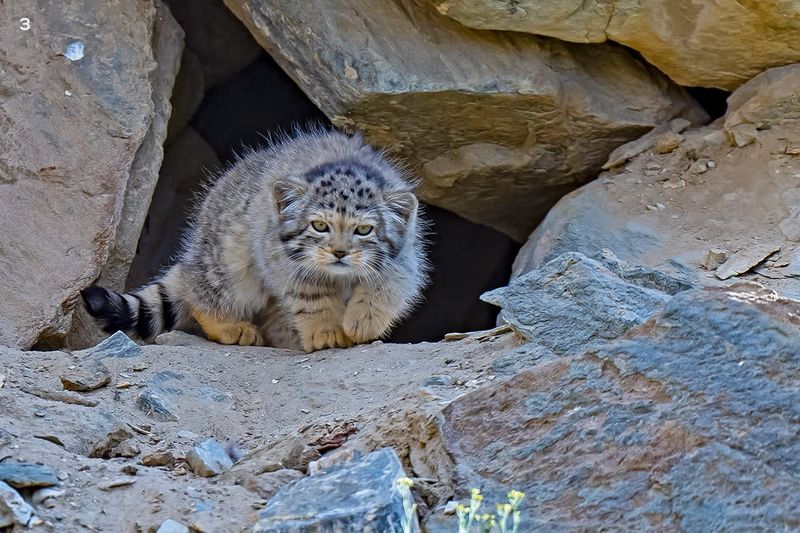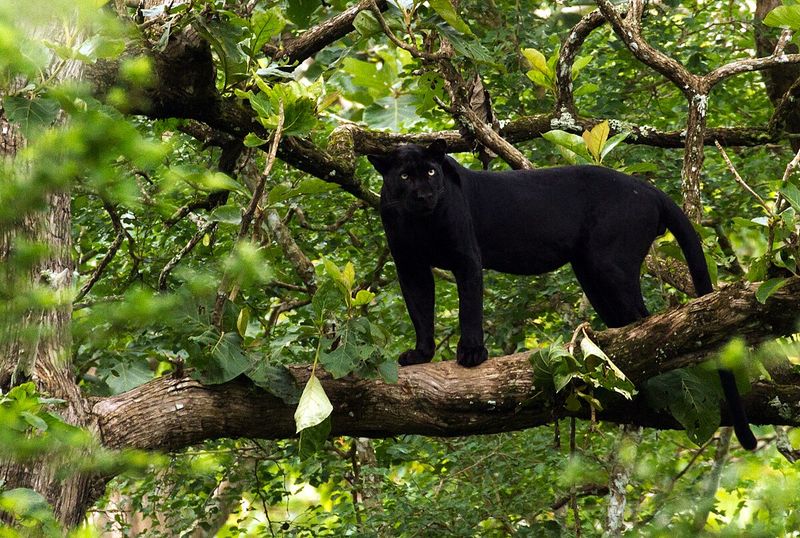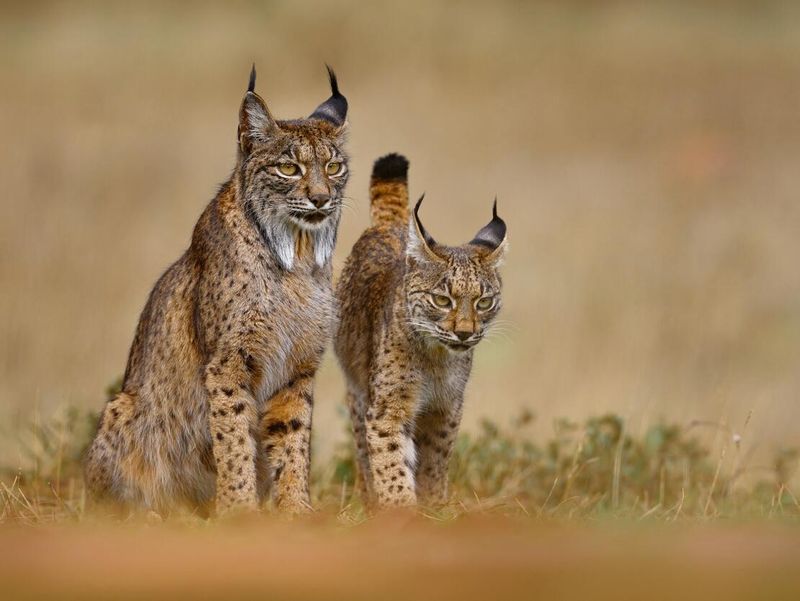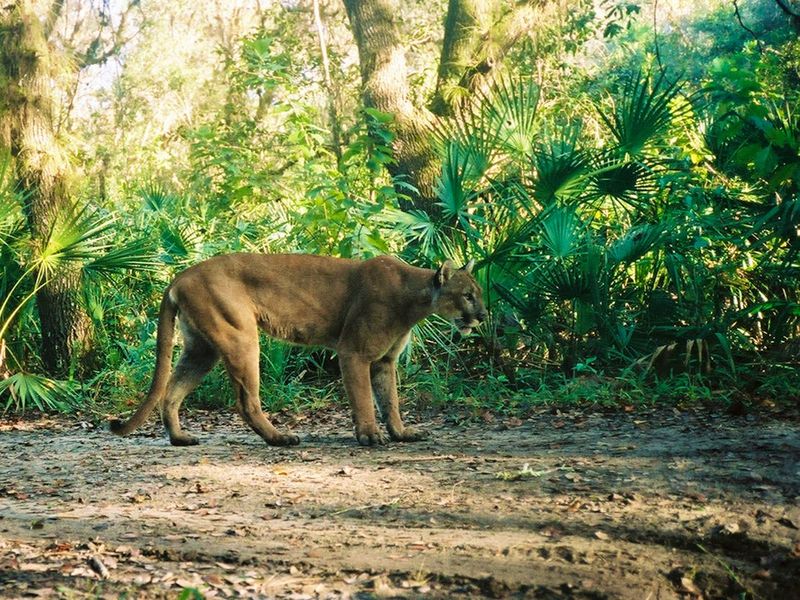📖 Table of Content:
- 1. African Lion: The Pride Ruler
- 2. Bengal Tiger: Solitary Sovereign
- 3. Snow Leopard: Mountain Monarch
- 4. Jaguar: Rainforest Ruler
- 5. Leopard: Adaptable Aristocrat
- 6. Puma: American Apex
- 7. Cheetah: Sprinting Sovereign
- 8. Siberian Tiger: Taiga King
- 9. Clouded Leopard: Canopy Commander
- 10. Eurasian Lynx: Forest Phantom
- 11. Serval: Savanna Sentinel
- 12. Sunda Clouded Leopard: Island Imperator
- 13. Lion-tailed Macaque: Western Ghats Warden
- 14. Caracal: Desert Dynast
- 15. Fishing Cat: Wetland Warlord
- 16. Ocelot: Jungle Jewel
- 17. Flat-headed Cat: Stream Sovereign
- 18. Pallas’s Cat: Steppe Sovereign
- 19. Black Panther: Shadow Sovereign
- 20. Iberian Lynx: Mediterranean Monarch
- 21. Florida Panther: Everglades Emperor
Big cats rule their domains with a combination of strength, intelligence, and instinct that mirrors royal command. These magnificent predators establish and defend territories that can span hundreds of square miles, marking boundaries and enforcing their rule through scent, sound, and sometimes fierce confrontation. From the misty mountains of Asia to the sprawling savannas of Africa, these feline monarchs have adapted to diverse environments while maintaining their position at the top of the food chain.
1. African Lion: The Pride Ruler
Majestic manes frame the face of the male African lion, creating an unmistakable silhouette against the savanna sunset. These social cats live in prides of up to 40 individuals, with males defending territories that can span 100 square miles.
Unlike most solitary felines, lions cooperate in hunting and raising cubs. Their thunderous roars, audible up to five miles away, serve as vocal boundary markers warning intruders to stay clear. Females do most of the hunting, while males focus on territory defense and protection from rival coalitions.
A lion’s territory typically includes various habitats – grasslands, woodlands, and scrub – giving the pride access to diverse prey species and water sources.
2. Bengal Tiger: Solitary Sovereign
Orange coats blazing with black stripes, Bengal tigers patrol dense forests and mangrove swamps with silent authority. Each adult maintains exclusive hunting grounds of 20-60 square miles, marked with scent, scratches on trees, and urine sprays that act as chemical signposts.
These powerful swimmers don’t hesitate to cross rivers or wade through swamps to defend their claims. Females raise cubs alone within their territory, teaching them hunting skills and boundary awareness before they establish their own domains.
Human encroachment has fragmented tiger territories, forcing these cats to adapt to smaller ranges or risk dangerous conflicts with villages and farms.
3. Snow Leopard: Mountain Monarch
Perfectly camouflaged against rocky slopes, snow leopards command the highest territories of any big cat. Their thick fur and enlarged nasal cavities allow them to thrive in oxygen-thin air at elevations up to 18,000 feet in Central Asia’s mountain ranges.
These elusive cats mark their extensive territories by scraping the ground and leaving scent marks on prominent rocks. Their long, thick tails – almost as long as their bodies – provide balance on treacherous mountain ledges and wrap around sleeping leopards for warmth.
A snow leopard might travel 15-20 miles daily within its territory, following the seasonal movements of prey like blue sheep and ibex across vertical landscapes.
4. Jaguar: Rainforest Ruler
Stocky and powerful, jaguars reign supreme in the dense Amazon rainforest. Their territories center around riverbanks, where they hunt with a unique killing method – crushing skulls with the strongest bite force of any big cat, powerful enough to pierce turtle shells.
Male jaguars maintain territories up to 50 square miles that often overlap with several females’ smaller ranges. These excellent swimmers patrol waterways as highways through their domain, leaving scratch marks and scat as territorial warnings.
Unlike many cats, jaguars don’t avoid water – they embrace it, swimming across rivers and hunting caimans in their aquatic habitat, making their territories three-dimensional kingdoms spanning land and water.
5. Leopard: Adaptable Aristocrat
Masters of versatility, leopards establish territories across an astonishing range of habitats – from rainforests to deserts, mountains to suburbs. Their incredible adaptability allows them to thrive where other big cats cannot, claiming territories as small as 1 square mile or as vast as 100.
Famous for hoisting kills into trees to prevent theft by other predators, leopards create aerial food caches throughout their territory. Their exceptional strength allows them to carry prey weighing more than themselves up into branches.
Urban-dwelling leopards have adapted to human landscapes in places like Mumbai, India, where they patrol territories that include parks and forest fragments within city limits, hunting domestic animals when natural prey is scarce.
6. Puma: American Apex
Known variously as mountain lions, cougars, or pumas, these tawny cats rule the longest territorial range of any land mammal in the Americas. From Canadian forests to Patagonian grasslands, pumas adapt their territorial behaviors to diverse ecosystems.
Male territories typically encompass those of several females, with ranges spanning 30-125 square miles depending on prey density. These athletic cats can jump 15 feet vertically and 40 feet horizontally, allowing them to traverse complex three-dimensional territories with ease.
Pumas create territorial markers by scraping together piles of leaves and dirt, then spraying them with urine or marking with scat. These scent mounds serve as chemical signposts warning other pumas to respect boundaries.
7. Cheetah: Sprinting Sovereign
Built for speed rather than power, cheetahs command territories through swift patrol rather than brute force. Males sometimes form coalitions of 2-3 brothers who jointly defend territories of up to 500 square miles in open grasslands and light woodlands.
Female cheetahs maintain smaller, shifting home ranges that overlap with multiple male territories. Their famous acceleration – 0 to 60 mph in three seconds – allows them to cover vast distances during daily territory checks.
Distinctive tall termite mounds serve as cheetah communication centers where they leave scent marks and survey their domains. Unlike other big cats, cheetahs are primarily diurnal, patrolling during daylight hours when their exceptional vision gives them an advantage.
8. Siberian Tiger: Taiga King
Largest of all cats, Siberian tigers patrol vast boreal forest territories that can exceed 1,000 square miles in Russia’s far east. Their thick fur and layer of fat allow them to dominate in temperatures that plunge to -50°F, where few other predators can survive.
These solitary giants leave territorial markers by scratching trees at heights that intimidate potential rivals. Their massive paw prints in snow – sometimes 6 inches across – serve as visible warnings to trespassers.
Seasonal changes dramatically affect how Siberian tigers utilize their territories, following prey migrations and shifting hunting patterns between summer and winter. Their incredible memories allow them to navigate complex territories even when landmarks are buried under deep snow.
9. Clouded Leopard: Canopy Commander
With the longest canine teeth relative to skull size of any living cat, clouded leopards rule the middle canopy of Southeast Asian forests. Their territories span both horizontal ground and vertical tree space, creating three-dimensional domains unlike those of ground-dwelling cats.
Specialized ankle joints rotate 180 degrees, allowing these medium-sized cats to descend trees headfirst like squirrels. This unique adaptation lets them patrol and hunt throughout the complex layers of their forested territories.
Clouded leopards maintain smaller territories than other big cats – typically 20-40 square miles – but defend them vigorously against intruders. Their beautiful marbled coat pattern provides perfect camouflage among dappled forest light, helping them monitor their territories while remaining invisible.
10. Eurasian Lynx: Forest Phantom
Tufted ears and broad snowshoe-like paws mark the Eurasian lynx as a specialized northern forest ruler. These medium-sized cats maintain territories of 40-180 square miles across Europe and Asia’s boreal forests, marking boundaries with urine and facial scent glands.
Male lynx territories typically overlap with several females, creating a social map invisible to human observers. Their remarkable hearing – aided by distinctive ear tufts that act as sound amplifiers – allows them to detect prey and rivals from extraordinary distances.
Lynx are crepuscular territory patrollers, most active at dawn and dusk when their excellent night vision gives them an advantage. Their silent movement through snow-covered forests earned them a mythical reputation as forest ghosts in European folklore.
11. Serval: Savanna Sentinel
© San Diego Zoo Animals & Plants – San Diego Zoo Safari Park
Standing tall on the longest legs relative to body size of any cat, servals command grassland territories with specialized hunting adaptations. Their enormous ears can detect rodents moving underground, allowing them to monitor both visible and hidden aspects of their 10-30 square mile territories.
Servals mark territory boundaries by rubbing scent glands on grass stems and depositing scat in prominent locations. Their incredible leaping ability – up to 10 feet vertically from a standing position – helps them see over tall grasses when surveying their domain.
These medium-sized cats create networks of runways through their territories, trampling down regular paths through grass that serve as patrol routes. Female territories sometimes cluster around optimal wetland hunting grounds, creating rare social tolerance among these otherwise solitary cats.
12. Sunda Clouded Leopard: Island Imperator
Evolving separately from mainland clouded leopards, the Sunda species rules the forests of Borneo and Sumatra with distinctive darker cloud markings. These island adaptations make them perfectly suited to command the unique ecosystems found nowhere else on Earth.
Their territories encompass multiple forest types, from lowland rainforests to mountain slopes up to 9,000 feet elevation. Recent research suggests they may adjust territorial behaviors to avoid competition with larger predators like tigers on Sumatra, while on Borneo they reign as the largest predator.
Camera trap studies reveal these secretive cats maintain complex territorial boundaries along ridgelines and waterways. Their exceptional climbing abilities allow them to patrol three-dimensional territories spanning ground level to high canopy.
13. Lion-tailed Macaque: Western Ghats Warden
Wait, that’s not a cat! The lion-tailed macaque is actually a primate native to the Western Ghats mountains of India. Let’s get back to our big cats.
The Asian Golden Cat rules territories across Southeast Asia’s diverse landscapes, from dense forests to high mountains. With a coat color that varies from golden to gray or even black, these medium-sized cats adapt their appearance to different habitat types within their 20-50 square mile ranges.
Also called Temminck’s cat, they mark territories using scent glands and scrapes along game trails. Their adaptability allows them to shift hunting patterns between day and night depending on competition from other predators, giving them temporal control over their domains.
14. Caracal: Desert Dynast
© San Diego Zoo Animals & Plants – San Diego Zoo Safari Park
Sporting distinctive black ear tufts that can be individually moved like radar dishes, caracals rule arid territories across Africa and parts of Asia. These medium-sized cats maintain hunting grounds of 5-20 square miles, depending on prey density in their harsh desert and scrubland habitats.
Caracals mark territories by spraying urine on prominent rocks and bushes, creating scent posts that warn rivals away. Their incredible jumping ability – leaping up to 10 feet high from a standing position – allows them to hunt birds in flight, a unique territorial resource few other predators can access.
These adaptable cats sometimes establish territories near human settlements, hunting small livestock if natural prey is scarce. Their name derives from Turkish words meaning “black ear,” highlighting their most distinctive feature.
15. Fishing Cat: Wetland Warlord
Webbed feet and water-resistant fur reveal the fishing cat’s specialized adaptation to rule wetland territories. Unlike most felines, these medium-sized cats embrace water, establishing 3-8 square mile territories centered around marshes, mangroves, and riverbanks across South and Southeast Asia.
Fishing cats create territorial markers by spraying urine on vegetation at the water’s edge. Their remarkable hunting technique involves tapping the water’s surface to mimic insects, then diving in to catch approaching fish – a specialized behavior that gives them exclusive access to aquatic prey.
Recent studies show fishing cats maintain smaller, more permanent territories than other similarly-sized cats, likely due to the rich food resources in healthy wetlands. Their distinctive head shape, with close-set eyes optimized for underwater vision, aids their specialized aquatic hunting.
16. Ocelot: Jungle Jewel
Gorgeously marked with complex rosettes and stripes, ocelots rule territories throughout Central and South American forests and scrublands. These medium-sized cats maintain hunting grounds of 1-4 square miles, considerably smaller than most cats due to the density of prey in tropical environments.
Ocelots create an extensive network of scent marks throughout their territory, rubbing cheek glands on vegetation and spraying urine on prominent landmarks. Their excellent night vision – six times better than human vision – allows them to patrol and hunt primarily after dark.
Recent research using GPS collars shows ocelots create territory maps with remarkable precision, using consistent travel routes and hunting grounds over many years. They often establish territories along waterways, which serve as natural boundaries and travel corridors.
17. Flat-headed Cat: Stream Sovereign
With webbed feet and a uniquely flattened head profile, these small but specialized cats rule wetland territories in Southeast Asia. Their unusual appearance – including forward-set eyes for improved underwater vision – reflects perfect adaptation to hunting along streams and in shallow waters.
Flat-headed cats maintain small territories of 1-3 square miles that follow waterways through forests and plantations. Their unusually sharp, backward-facing teeth are specialized for gripping slippery prey like fish and frogs, giving them access to food resources other cats can’t efficiently exploit.
These rare cats mark territories with scent glands and scat placed on banks above waterlines. Despite their small size, flat-headed cats defend their specialized aquatic territories vigorously against intruders, as their survival depends on exclusive access to limited wetland habitats.
18. Pallas’s Cat: Steppe Sovereign
Round pupils instead of vertical slits reveal just one of many unique adaptations that help Pallas’s cats rule high-altitude territories in Central Asia. Their exceptionally thick fur – the longest and densest of any cat – allows them to patrol territories in temperatures as low as -60°F.
These small but fierce cats maintain territories of 4-8 square miles across rocky steppes and grasslands. Their stocky build and short legs are adaptations to their cold environment, conserving body heat while sacrificing running speed.
Pallas’s cats create territories with numerous den sites among rock piles and abandoned burrows, moving between them regularly to avoid detection by larger predators. Their flat-headed posture while stalking helps them remain invisible in their sparsely vegetated habitats.
19. Black Panther: Shadow Sovereign
Not a separate species but a melanistic leopard or jaguar, black panthers rule their territories with the advantage of near-invisibility in dense forests. Their all-black coats result from a genetic mutation affecting pigment production, though their spots remain visible up close.
Black panthers establish territories identical to their normally-colored counterparts, but may have hunting advantages in certain habitats. Studies suggest melanism occurs more frequently in humid forest environments, where darker coloration provides better camouflage during hunting.
In Southeast Asia, black leopards are more common than spotted ones in dense tropical forests. Their shadow-like appearance has given them mythical status in many cultures, with folklore often attributing supernatural powers to these melanistic territory holders.
20. Iberian Lynx: Mediterranean Monarch
With fewer than 1,000 individuals remaining, the critically endangered Iberian lynx rules diminishing territories in southern Spain. These medium-sized cats maintain hunting grounds of 4-20 square miles centered around Mediterranean scrubland habitats with abundant European rabbits, their primary prey.
Male lynx territories typically overlap with one or more females, creating a social structure reinforced through scent marking and vocalizations. Their distinctive beard-like facial ruffs and ear tufts serve as visual signals to other lynx during territorial encounters.
Conservation efforts have helped expand Iberian lynx territories through rabbit habitat restoration and reintroduction programs. Their specialized diet – with rabbits comprising over 80% of their food – makes territory quality directly dependent on healthy rabbit populations.
21. Florida Panther: Everglades Emperor
As a subspecies of mountain lion adapted to subtropical wetlands, Florida panthers command territories in the southern tip of the Florida peninsula. These endangered cats require large, connected territories of 50-200 square miles encompassing diverse habitats from cypress swamps to pine flatwoods.
Male panthers create territorial markers by scraping soil and vegetation into piles, then spraying them with urine. These scrapes serve as chemical signposts warning other males to respect boundaries. Females maintain smaller, overlapping territories centered around optimal denning sites.
Florida panthers have adapted to navigate flooded areas by swimming between tree islands during wet seasons. Conservation efforts include wildlife underpasses beneath highways that allow panthers to safely access different parts of their fragmented territories.
